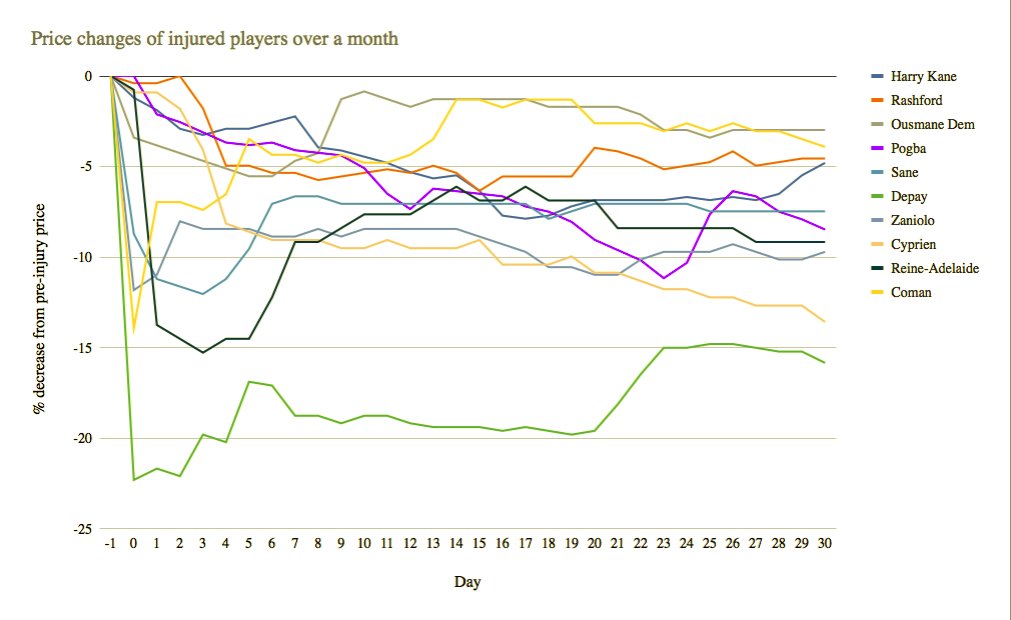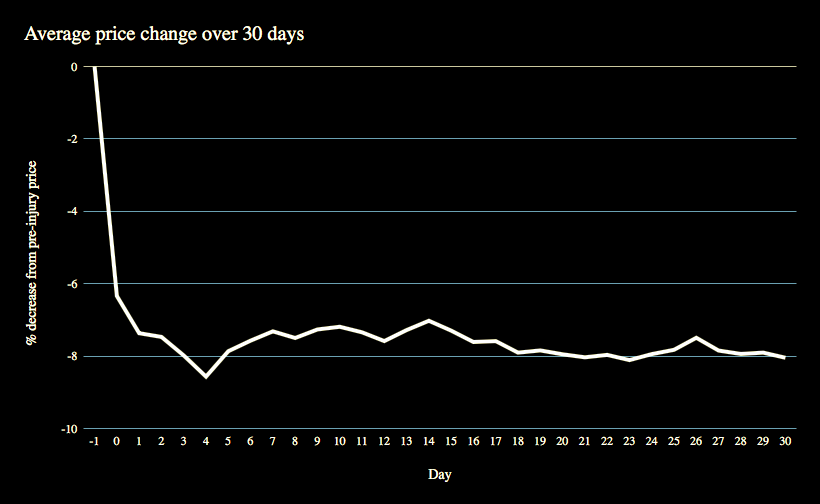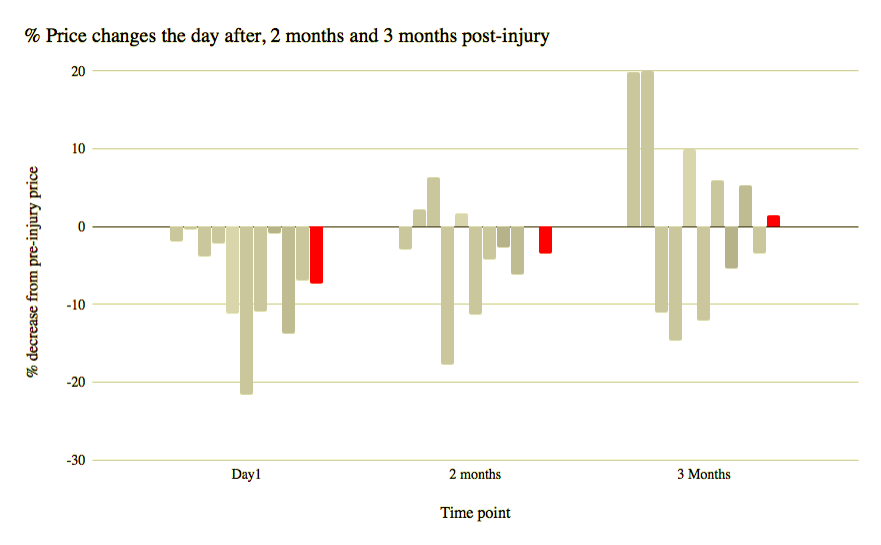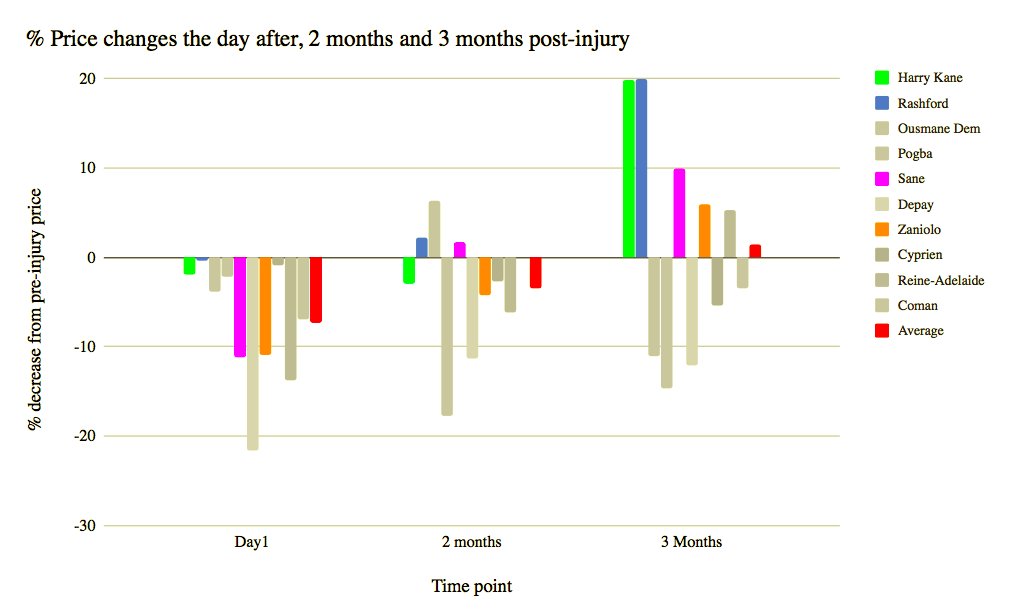**Injury trading  https://abs.twimg.com/emoji/v2/... draggable="false" alt="🦿" title="Mechanical leg" aria-label="Emoji: Mechanical leg">
https://abs.twimg.com/emoji/v2/... draggable="false" alt="🦿" title="Mechanical leg" aria-label="Emoji: Mechanical leg"> https://abs.twimg.com/emoji/v2/... draggable="false" alt="⚽️" title="Soccer ball" aria-label="Emoji: Soccer ball">**
https://abs.twimg.com/emoji/v2/... draggable="false" alt="⚽️" title="Soccer ball" aria-label="Emoji: Soccer ball">**
Can the panic of others be fruitful?
Something i’ve been working on for a while. Order books have changed the method, but I don’t think will change the trader patterns. Opposing opinions welcomed.
#footballindex 1/
Can the panic of others be fruitful?
Something i’ve been working on for a while. Order books have changed the method, but I don’t think will change the trader patterns. Opposing opinions welcomed.
#footballindex 1/
It is obvious that when a high-profile player gets a serious injury (ACL, fracture, hamstring tear), their price drops. I did an analysis on ten of the highest profiled players injured this season, to see if it is worthwhile trying to profit quickly from these injuries. 2/
Considering this is an analysis of 10 players only, it is not a rule for injuries- better described as case-studies. However, the patterns are remarkably similar so conclusions can be made with a relative degree of confidence. 3/
Looking at the graph, there seems to be an emerging pattern. Players drop huge amounts in the first couple of days post-injury. They then rise 2-5% within the week, when people unlist/other buy back in on the opportunity. Over time, traders get bored and start listing again. 4/
The average decrease the day after injury was 7%, but some cases dropped as far as 22% (Depay) and 14% (Coman). The interest lies in seeing how much you can profit if you were to buy at the lowest point, and sell within 3 months. 5/
On average, 1 month after the injury the player prices were the same as a few days after. A long period to hold a player with no match-day intrinsic value. 6/
Well, if you were to buy on day 1 after injury, the average decrease was 7%. If you were to then hold all 10 players for 3 months you would have profited 8%. While this is a confident bet, it is not a big return. 7/
The average lowest price point was -12% of the pre-injury price. By 3 months, the average price was only 1% higher than pre-injury. This means if you were to have perfectly timed all 10 trades, you would have made an average profit of 13% over 3 months. 8/
In conclusion, injury trading may not be so profitable after all short term (most will rise by 6 months). The art lies in the skill of picking the right ones. If you had bought Kane, Depay and Sane at their lowest price and sold 3 months after, you would’ve made over 20% CA. 9/
There are skilled injury traders who profit hugely from these scenarios. However, for the average trader it is not something I would recommend, unless you plan to hold for the long term. It’s risky, and the rewards aren’t big. 10/
One strategy to make a quick 5% in a week, was to buy on the day of the injury and try to sell a few days later when everyone piles in. Problem is, there are many others doing the same, and if you fail then you’re trapped in the hold for months. 11/
It is more than likely that OB’s will affect this scale of price changes, and the ability to seize opportunities. However, the nature of traders will probably remain the same and patterns should not be so different. Open to debate here... 12/
I did not adjust for any market movements etc. It is important to consider the impact of new traders investing, or not, in an injured player when they join FI. 13/
Important to note these are high-profile players. I didn& #39;t look at low-profile players, or recurring injuries.
Important to note these are high-profile players. I didn& #39;t look at low-profile players, or recurring injuries.

 Read on Twitter
Read on Twitter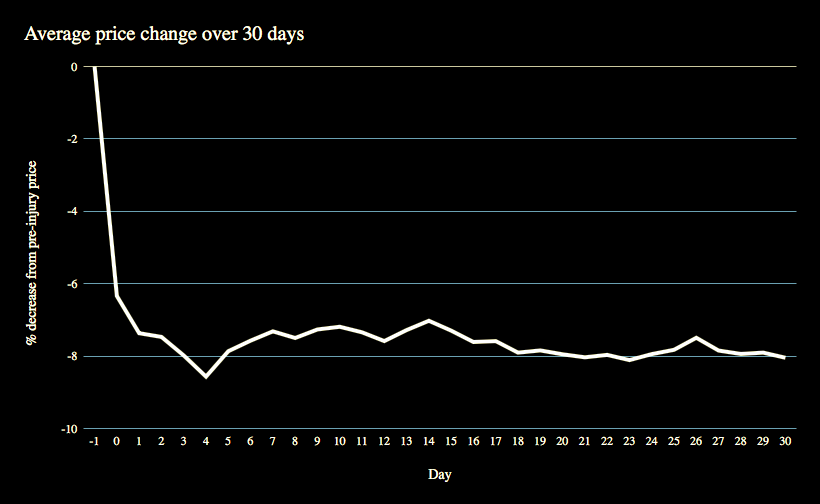 https://abs.twimg.com/emoji/v2/... draggable="false" alt="⚽️" title="Soccer ball" aria-label="Emoji: Soccer ball">**Can the panic of others be fruitful?Something i’ve been working on for a while. Order books have changed the method, but I don’t think will change the trader patterns. Opposing opinions welcomed. #footballindex 1/" title="**Injury trading https://abs.twimg.com/emoji/v2/... draggable="false" alt="🦿" title="Mechanical leg" aria-label="Emoji: Mechanical leg">https://abs.twimg.com/emoji/v2/... draggable="false" alt="⚽️" title="Soccer ball" aria-label="Emoji: Soccer ball">**Can the panic of others be fruitful?Something i’ve been working on for a while. Order books have changed the method, but I don’t think will change the trader patterns. Opposing opinions welcomed. #footballindex 1/" class="img-responsive" style="max-width:100%;"/>
https://abs.twimg.com/emoji/v2/... draggable="false" alt="⚽️" title="Soccer ball" aria-label="Emoji: Soccer ball">**Can the panic of others be fruitful?Something i’ve been working on for a while. Order books have changed the method, but I don’t think will change the trader patterns. Opposing opinions welcomed. #footballindex 1/" title="**Injury trading https://abs.twimg.com/emoji/v2/... draggable="false" alt="🦿" title="Mechanical leg" aria-label="Emoji: Mechanical leg">https://abs.twimg.com/emoji/v2/... draggable="false" alt="⚽️" title="Soccer ball" aria-label="Emoji: Soccer ball">**Can the panic of others be fruitful?Something i’ve been working on for a while. Order books have changed the method, but I don’t think will change the trader patterns. Opposing opinions welcomed. #footballindex 1/" class="img-responsive" style="max-width:100%;"/>
